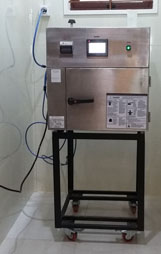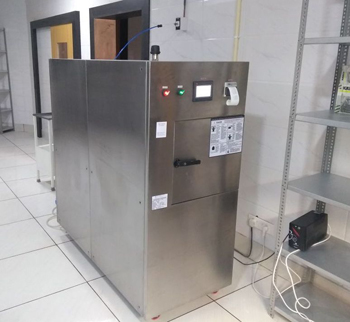In the healthcare industry, complex medical instruments often play a critical role in diagnostics and treatment. Sterilizing these instruments is vital to prevent infection and ensure patient safety. This article explores the challenges and solutions associated with sterilizing complex medical instruments to guarantee their efficacy in clinical settings.
The Significance of Sterilizing Complex Medical Instruments
Complex medical instruments, such as endoscopes, surgical instruments, and robotic devices, are indispensable in modern healthcare. However, these instruments come into contact with patients’ bodies and fluids, making effective sterilization a non-negotiable aspect of healthcare practice.
Challenges in Sterilizing Complex Medical Instruments
3.1 Instrument Complexity
Complex medical instruments often consist of intricate components, narrow channels, and delicate materials. Sterilizing them without compromising functionality can be a complex process.
3.2 Material Compatibility
Many medical instruments are made from a variety of materials, each with its sterilization requirements. Ensuring that all materials are compatible with the chosen sterilization method is challenging.
3.3 Regulatory Compliance
Compliance with stringent regulatory requirements adds another layer of complexity to the sterilization process for complex medical instruments. Meeting these standards is essential to ensure patient safety.

Sterilization Techniques for Complex Instruments
4.1 Autoclaving and Its Limitations
Autoclaving, which uses steam and pressure, is a widely used sterilization method. However, it may not be suitable for all complex instruments, as it can damage sensitive components or be ineffective in sterilizing long, narrow channels.
4.2 Low-Temperature Sterilization
Low-temperature sterilization methods, like hydrogen peroxide gas plasma and ethylene oxide gas sterilization, are gentle on sensitive instruments and can penetrate narrow channels effectively. These methods have gained popularity for complex instruments.
4.3 Customized Sterilization Protocols
Developing customized sterilization protocols for specific instruments is becoming common. These protocols take into account the instrument’s design, materials, and regulatory requirements, ensuring safe and effective sterilization.

Validation and Quality Assurance
5.1 Routine Monitoring
Routine monitoring of sterilization processes is crucial. Biological and chemical indicators are used to confirm that the sterilization process is functioning correctly.
5.2 Validation Testing
Validation testing, which involves subjecting instruments to sterilization challenges and testing their efficacy, is vital for complex instruments. This ensures that the chosen method can reliably sterilize the instruments under real-world conditions.
Emerging Technologies and Innovations
The field of sterilization is continuously evolving. Emerging technologies, such as cold plasma sterilization and advanced UV-C sterilization, offer promise for effectively sterilizing complex instruments without compromising their integrity. Innovations in sterilization packaging and tracking systems also enhance safety and traceability.
Conclusion
Sterilizing complex medical instruments presents a unique set of challenges due to their intricate design and material composition. However, these challenges can be overcome by selecting the right sterilization method, developing customized protocols, and implementing rigorous validation and quality assurance processes. As technology advances, the future of sterilizing complex instruments looks promising, ensuring the continued safety and efficacy of healthcare practices.
FAQs
1. Can complex medical instruments be sterilized using the same method as standard instruments?
- Complex instruments often require specialized sterilization methods due to their intricate design and material composition.
2. Are there standard sterilization protocols for complex instruments?
- Sterilization protocols are typically customized for specific complex instruments, considering their unique characteristics.
3. What is the role of validation testing in sterilizing complex instruments?
- Validation testing ensures that the chosen sterilization method effectively sterilizes complex instruments under real-world conditions, providing confidence in their safety.
4. Are there any sterilization methods that are considered universally suitable for complex instruments?
- Low-temperature sterilization methods, such as hydrogen peroxide gas plasma and ethylene oxide gas sterilization, are often preferred for complex instruments.
5. How often should routine monitoring of sterilization processes be conducted?
- Routine monitoring should be conducted as per regulatory guidelines and the facility’s policies, typically after every sterilization cycle.





